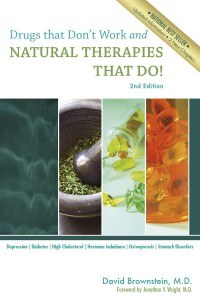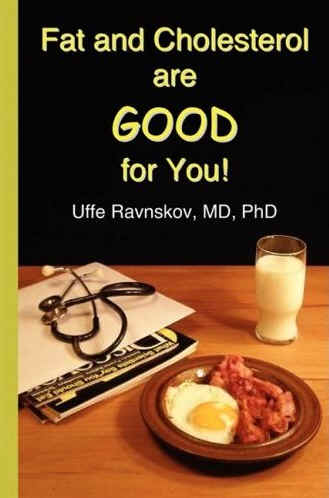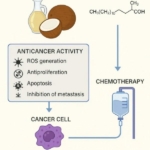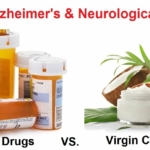
This week, the new guidelines on preventing heart disease were released by the American Heart Association and the American College of Cardiology. The media reported widely about this. Now, for most people, monitoring LDL-cholesterol and total cholesterol levels is not indicated. If your risk of developing cardiac disease is over 7.5% over a ten year period, then statins are recommended. The risk can be calculated by going to the American Heart Association website (www.heart.org) and plugging in your cholesterol and HDL-cholesterol numbers as well as your age and whether you smoke or not. Then a number is revealed.
It is hard for me to believe that this is where modern medicine is at. I guess nobody needs to see a health care professional anymore—just put your numbers in and if you have a 10-year heart attack risk of >7.5%,then you must take a statin for the rest of your life. I have one word for this nonsense: fugetaboutit.
The new guidelines are contained in an 85 page, mind-numbing document. It is a very difficult manuscript to read. I will take pieces of it and share my concerns with you. Let’s start with the recommendations that would put most adult Americans on statin drugs. On page 18, the report states, “Data has shown that statins used for primary prevention have substantial ASCVD (atherosclerotic cardiovascular disease) risk reduction benefits across the range of LDL–C levels of 70-189 mg/dL.” Of course, that is after the “experts” state that it is unclear of lowering LDL-cholesterol levels have any benefit. Nonetheless, the authors cite a meta-analysis by the Cholesterol Treatment Trialists’ (CTT) to support their conclusion. (1)
The CTT article was a meta-analysis of 27 randomized trials to ascertain whether reducing LDL-cholesterol levels with statin use reduces vascular events in people who are at a low risk for cardiac events. The authors of the article reported that reduction in LDL-cholesterol levels with a statin reduced the risk of major vascular events by 21%. However, this is a relative risk reduction. When deciding whether to prescribe a statin for a patient, the 21% relative risk reduction should not be used. Unfortunately, most (or nearly all) doctors have absolutely no understanding about statistics and what relative risk means.
What has more clinical meaning is the absolute risk reduction. “Absolute differences in risk are more clinically important than relative risk reductions in risk and deciding whether to recommend drug therapy.” (2) I and my trusty calculator went to work to figure out the relevant numbers. The absolute risk reduction in the CTT study was 0.77%. The authors should have reported, “The reduction in LDL-cholesterol levels with a statin reduced the risk of major vascular events by 0.77%.” According to the CTT numbers, 129 people would need to be treated with a statin for at least five years to prevent one vascular event. That means that 128 subjects took the statin without any benefit and they could have developed adverse effects. In other words, this study showed that statins failed 99.3% of those (128/129) who took them.
So, tell me, does this study make you want to take a statin to prevent a vascular event? If anything, it should make you think the opposite.
People do not get vascular events from a lack of a statin medication. Vascular events occur from a myriad of reasons including eating a poor diet, dehydration, as well as nutrient and hormonal imbalances. More information about statins can be found in my book, Drugs That Don’t Work and Natural Therapies That Do.
Don’t be scared about the media headlines. As you become more educated you will be more comfortable making your health care decisions.
Read the full article here: http://blog.drbrownstein.com/453/
References
(1) Lancet. 2012;380;581-90
(2) New Eng. J. of Med. Vol. 359. 2280-82. 2008





 Research Continues to Show Virgin Coconut Oil's Effectiveness in Treating Cancer
Research Continues to Show Virgin Coconut Oil's Effectiveness in Treating Cancer Coconut Oil Continues to Benefit Alzheimer's Patients over Drugs as Studies Continue for Neurological Benefits
Coconut Oil Continues to Benefit Alzheimer's Patients over Drugs as Studies Continue for Neurological Benefits How the Simple High-Fat Low-Carb Ketogenic Diet Continues to Change People's Lives
How the Simple High-Fat Low-Carb Ketogenic Diet Continues to Change People's Lives New Studies Continue to Show that Coconut Oil is the Best Oil for Treating Skin Conditions and Maintaining Healthy Skin and Teeth
New Studies Continue to Show that Coconut Oil is the Best Oil for Treating Skin Conditions and Maintaining Healthy Skin and Teeth New Study Confirms Health Benefits of Coconut Oil and USDA False Claims Against It
New Study Confirms Health Benefits of Coconut Oil and USDA False Claims Against It